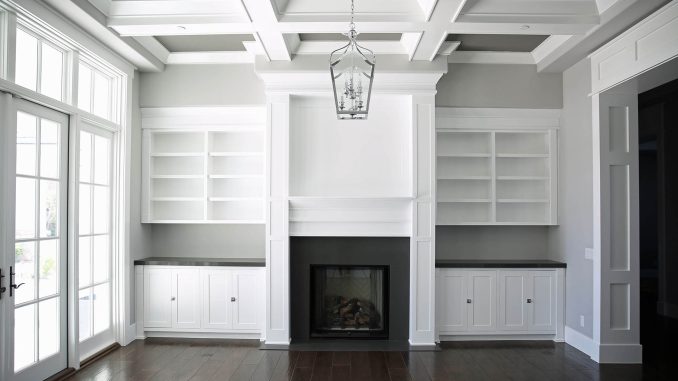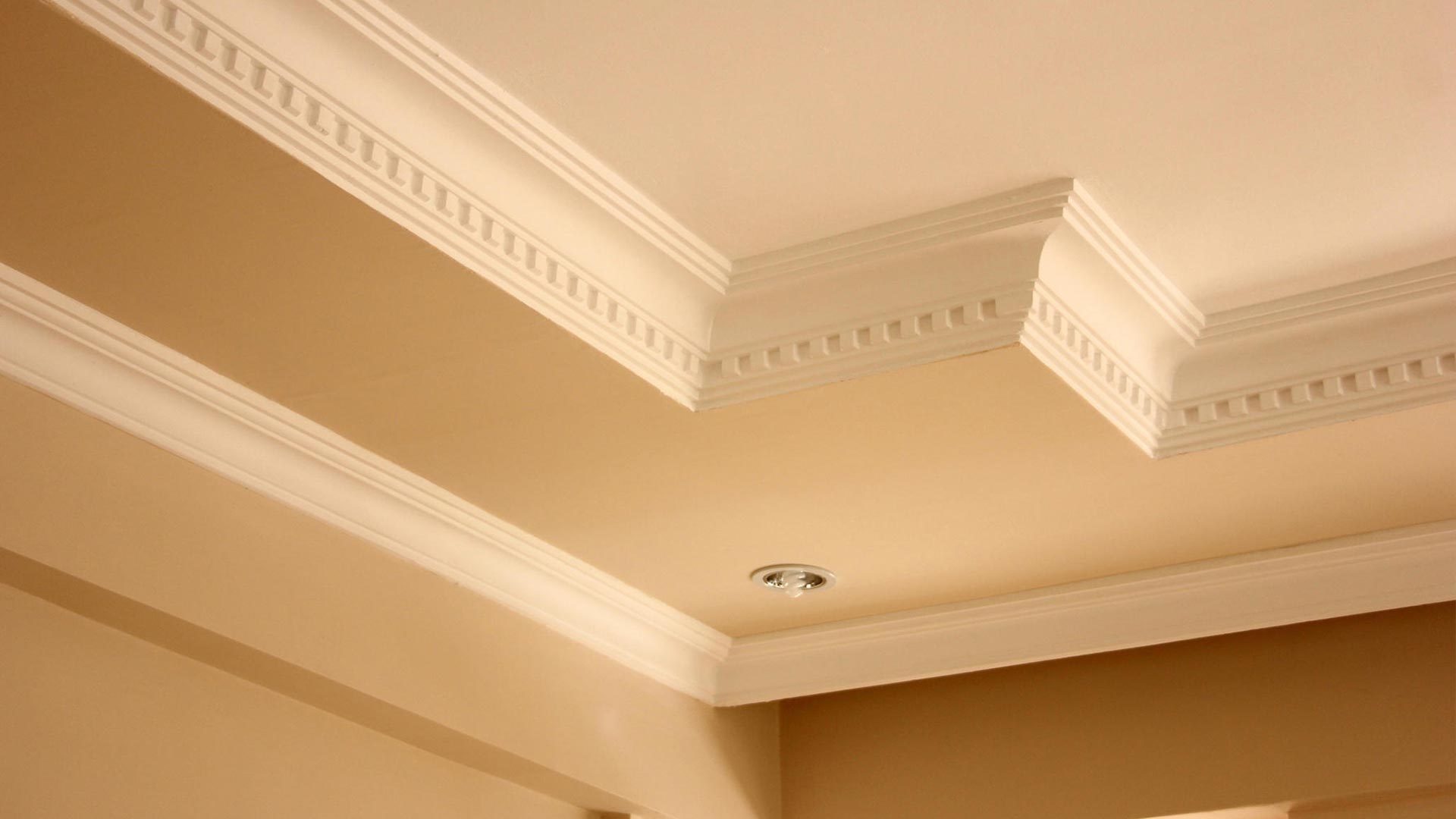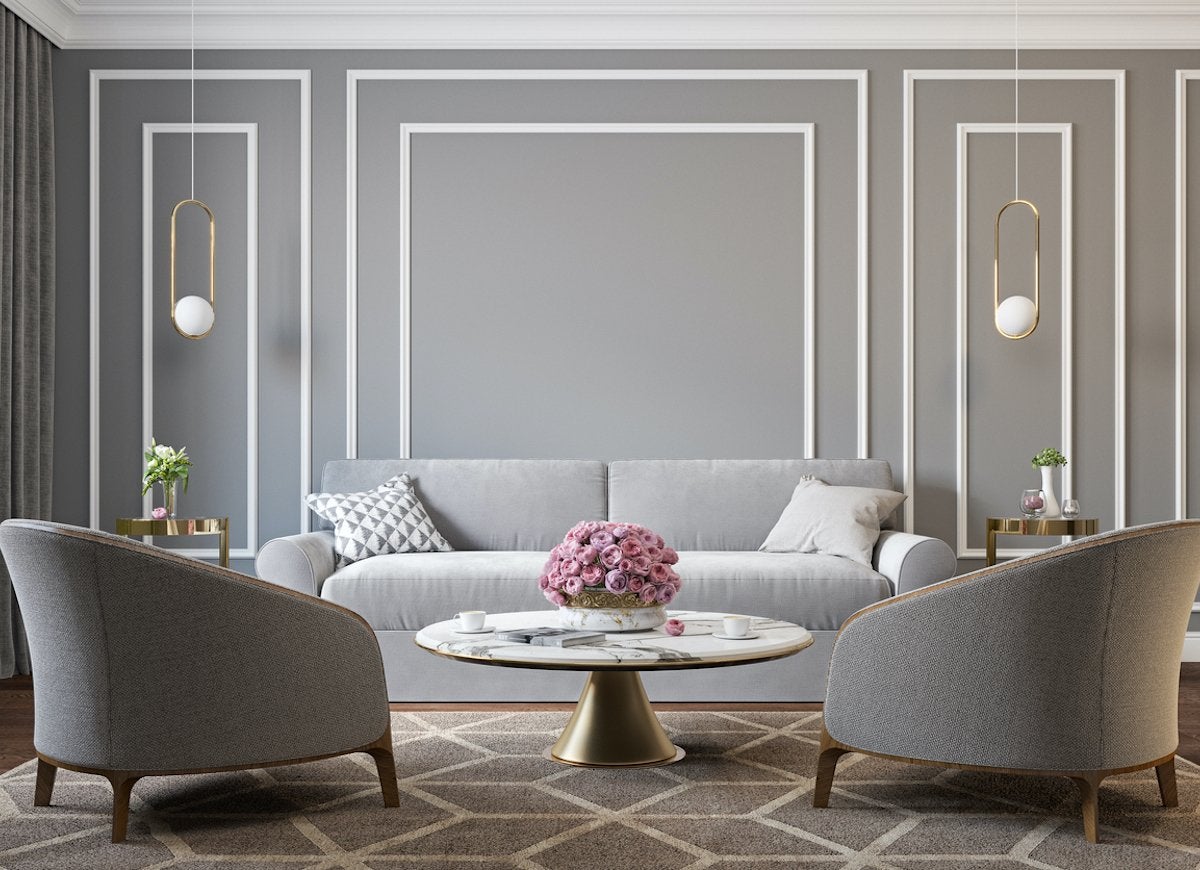
Are you trying to find the perfect trim or moulding for your home? It’s not always an easy task, especially since there are so many different types! So how can you choose the right interior moulding for your home? Let’s chat a bit about some of the most popular types of trim. Then, we’ll give you some inspiration to get you started.
Types of Moulding
There are several types of moulding, but these six are some of the most common types:
Crown Moulding is what most people think of when they hear the term “moulding.” It’s the horizontal piece of trim that goes between the wall and the ceiling to help soften the transition between the two surfaces.
You can also use crown moulding on top of door casings, cabinets, columns, and other architectural elements to add height, soften transitions, or tie a room’s look together. Traditionally, crown moulding is white or cream-colored, but it can really be any colour with the right eye.

Panel Moulding is used specifically to add texture and interest to a wall or ceiling. Most often, panel moulding is used to embellish panels on recessed or flat surfaces. Generally, people use a thinner trim for panel moulding, but that’s not a hard and fast rule. Panel moulding can be any width and colour. It really just depends on the motif.
Fireplace Moulding is an easy way to bring attention to a room’s fireplace. This moulding is generally placed on or around a fireplace’s mantle to add height, dimension, or visual intrigue.
Accent Moulding refers to any moulding used to accent a room’s aesthetic. For example, it could be using cream-colored moulding along a mocha-coloured wall. It could be using moulding to create panels, or creating an intricate design using different types of moulding.
There isn’t a specific type of moulding called “accent moulding.” Instead, it refers to the reason you’re applying the moulding. If it’s to create an accent wall, a visually interesting element, or texture, it’s probably accent moulding!
Chair Rail Moulding is most commonly used in kitchens or dining rooms, but you can hang it anywhere. Chair rail moulding was originally designed to keep the wall protected from dings and scuffs from chairs, so naturally, chair rail moulding is usually hung around the height of the top of a chair.
Picture Rail Moulding is typically one-and-a-half to two inches thick. It wraps around the room at the same height as a room’s windows or right beneath the crown moulding. Historically, picture rail moulding was used to hang pictures on the wall since plaster walls were difficult to hang art on. Today, most picture rail moulding isn’t used to hang art, but it can still add an artistic touch to a room’s design.
Now that we know what types of moulding is out there, here are a few examples of architectural styles and matching trim styles, and why they work so well together:
CRAFTSMAN
The Craftsman home style is often described as “honest,” as in the happy result of a satisfying day of hard work. The best trim to match this most handcrafted of home styles? Simple, tailored and purposeful door and minimally ornamented window casings. Create roomier spaces with white, light beige and cream-colored crown moulding.
COLONIAL
This home style distinguishes itself with a combination of rustic simplicity and rich detail. The symmetry and confident formality of Colonials call for interior trim that lends a touch of stately courtliness to each room. Choose multi-piece trim and wider baseboards, wainscoting and crown moulding to surround and adorn family room floors, walls and ceilings.
CAPE COD
A practical and quaintly unassuming design that dates back to the 17th century, Cape Cods are best accented by interior trim that adorns subtly. Areas to consider: transom windows and sidelights that surround multi-panelled entry doors, casings for double-hung windows, picture rails and frame walls. Kitchens and dining areas are central to Cape Cods, and white ceilings and cabinet moulding against soothing greys and warm blues create a very inviting and timeless combination.

MODERN
The clean expansiveness of this home style lends itself to unadorned window and door casings, and baseboards. You can go minimalist and use trim merely to protect walls and floors from scuff marks and handprints. Or you can make a neutral-coloured dining room instantly more interesting with contrasting (but complementary) door, floor and window trim colour—light mocha accents over cream-colored walls, for example.
RANCH
Open, informal and inviting, the Ranch is best represented by trim that keeps a relaxed feeling flowing from room to room (or area to area). Many levels and styles of trim work here, from simple baseboards to more formal trimmed windows and cabinetry in the kitchen, fireplace mantels in the family room and passageway casings.
Whether you plan to DIY your own crown moulding, or work with a professional, explore Plastibec’s selection to evaluate your options.

Leave a Reply